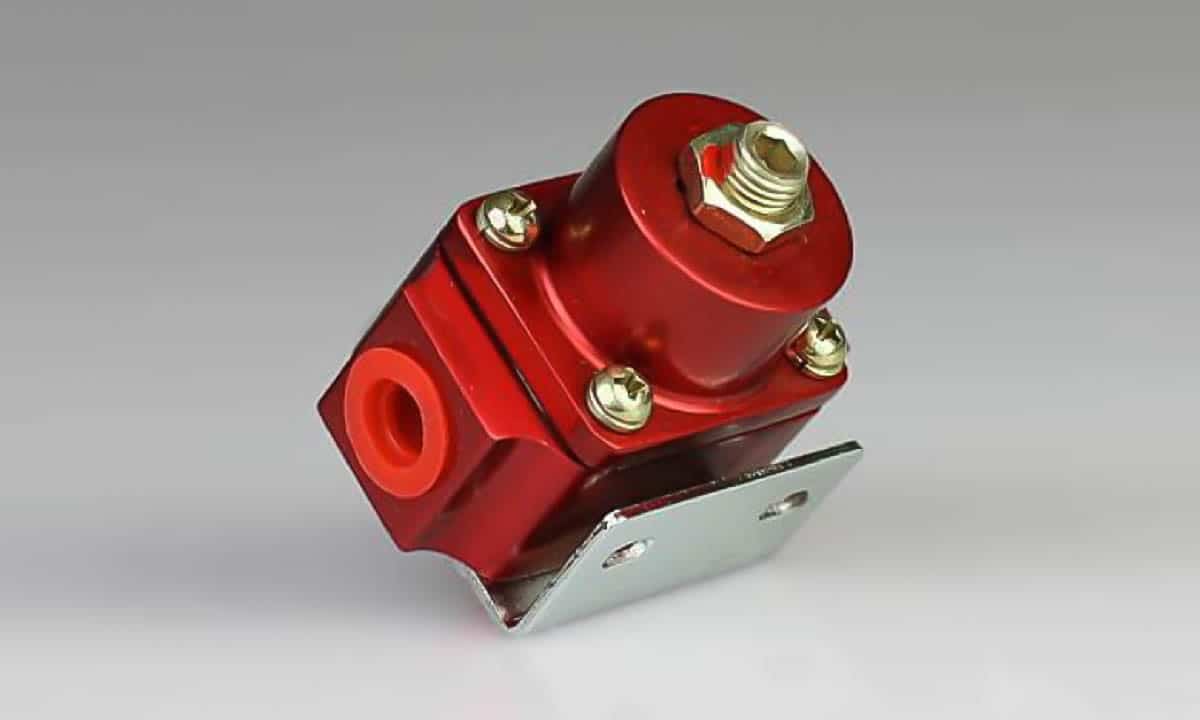
The usefulness of fuel pressure regulator it is basically to control and keep the fuel pressure constant. In this way it avoids damage to other components such as the injectors or the fuel system ducts. In addition, it contributes to the optimal functioning of the engine and to a better use of combustion.
This regulator also allows fuel return towards the fuel tank, in case the pressure is too high. So it also has the ability to generate a flow back.
How does the pressure regulator work?
To fulfill that function, the regulator is connected to the fuel lines. If the pressure in them is excessive, let the gasoline out through a valve that opens the return line to the tank. Its operation depends on whether it is mechanical or electrical:
mechanical pressure regulator
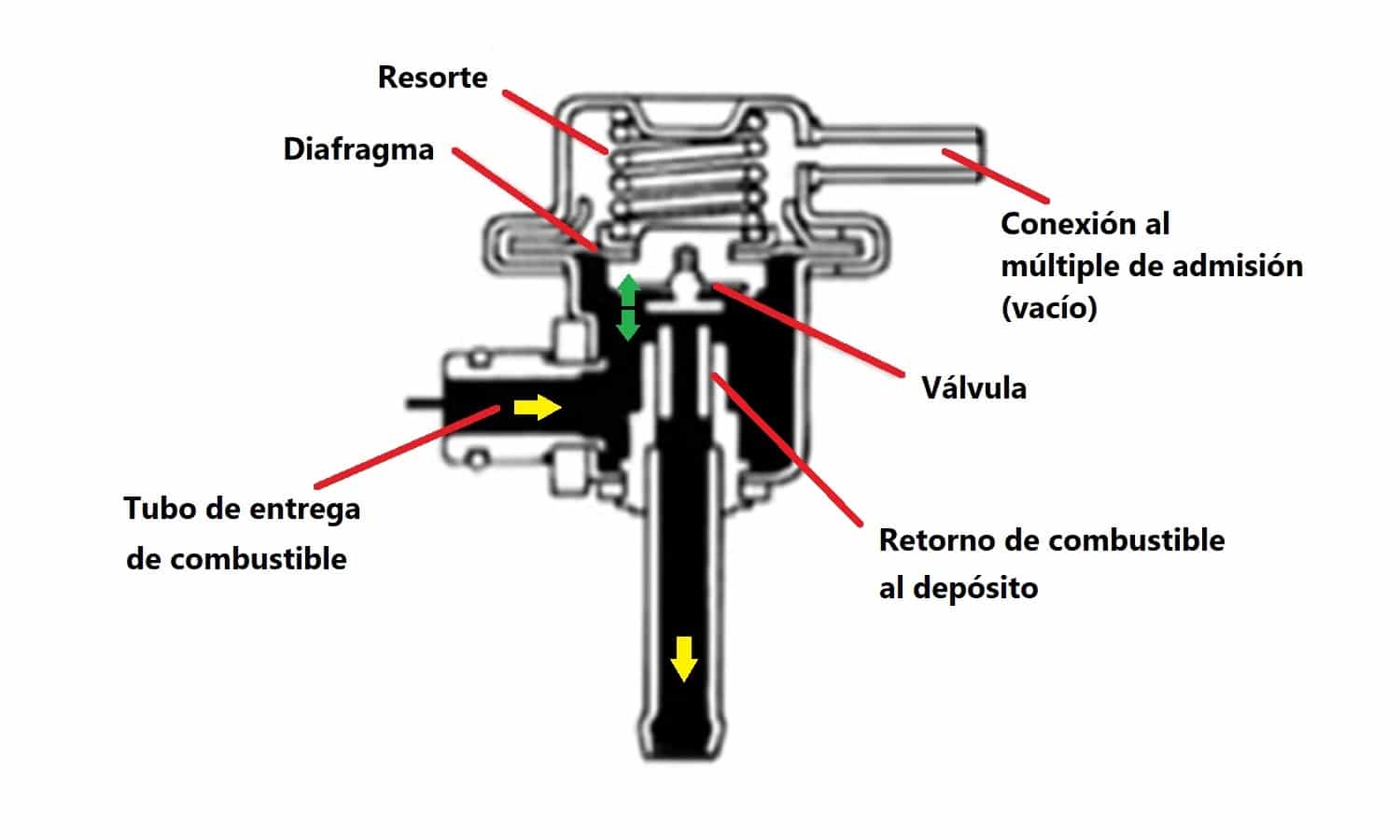
It consists of a metal container, pressure springa membrane and a Válvula. Its mechanism is very simple because it consists of two parts separated by said membrane. As you can see in the image, one with a black background, in which the fuel is, and another with a white background, in which there is a spring that presses the membrane downwards.
El spring (or dock) is calibrated to tighten the membrane with a specific pressure. If on the other side of the membrane, the fuel has more pressure than the spring has, will push the membrane up. At which point the valve will open and free the passage through the return line to the fuel tank. In this way the pressure drops and the spring will close the passage of fuel through the return.
Now, the fuel pressure needed by the engine is not always the same. For this reason, there is a system that makes it possible to compensate for the pressure exerted by the spring on the membrane: a vacuum system. Effectively, the spring side is connected directly to the intake manifold or manifold (in the image, top right). A place where a certain vacuum is generated, which will “suck” the membrane upwards, compensating for the pressure exerted by the spring. Thus, the fuel pressure necessary to open the passage of the return pipe will be lower.
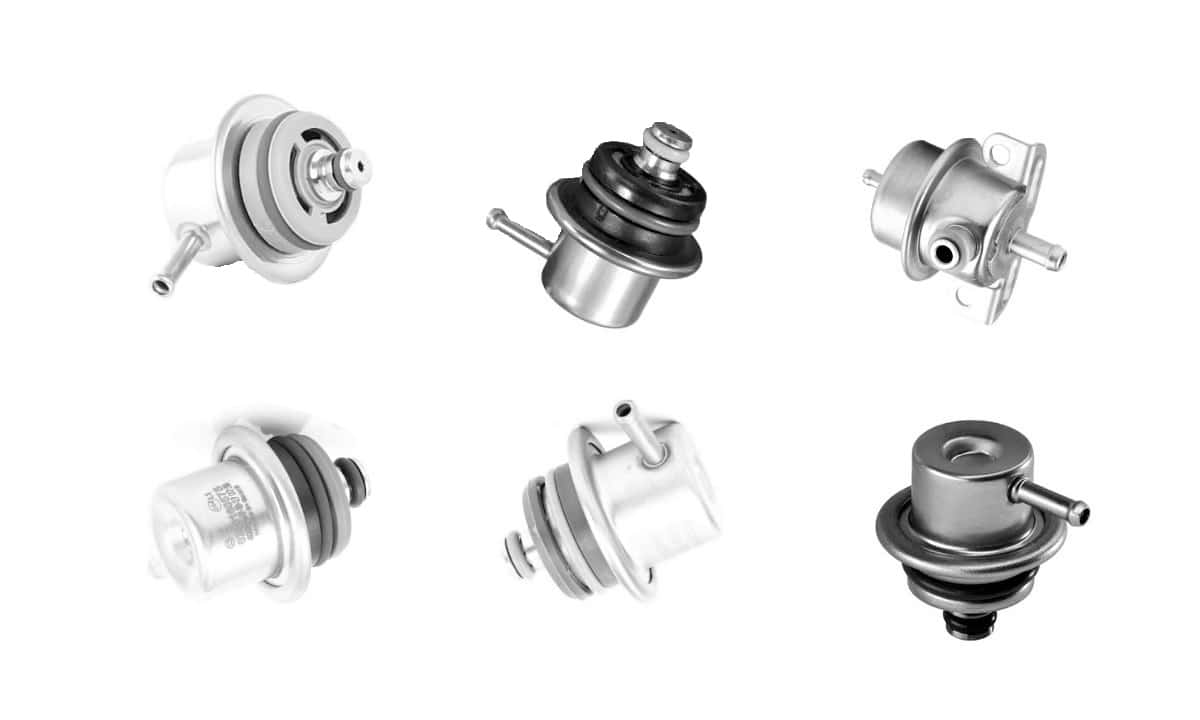
Examples:
- The vacuum that is generated in the manifold, and therefore the pressure regulator, is older when the engine is running at idle. A time when the engine needs less fuel. This vacuum compensates for the spring pressure in such a way that the pressure needed to push the membrane is lower. A concrete example is that the fuel pressure required to lift it will be about 10 PSI (0,68 bar) lower.
- The vacuum which is generated in the manifold is minor or non-existent under full throttle. So the spring force will push the membrane without a compensating vacuum. In this way, the fuel pressure can be higher without lifting the membrane and therefore the return line valve.
Electronic pressure regulator
In this case the pressure regulator has no mechanical components. It works through a solenoid valve, which works with a control solenoid instead of a dock. The pressure is set by a sensorinstead of a direct connection to the intake manifold. In this way, the fuel pressure can be regulated more precisely and efficiently. It is more common to find this type of valve in diesel engines with Common Rail.
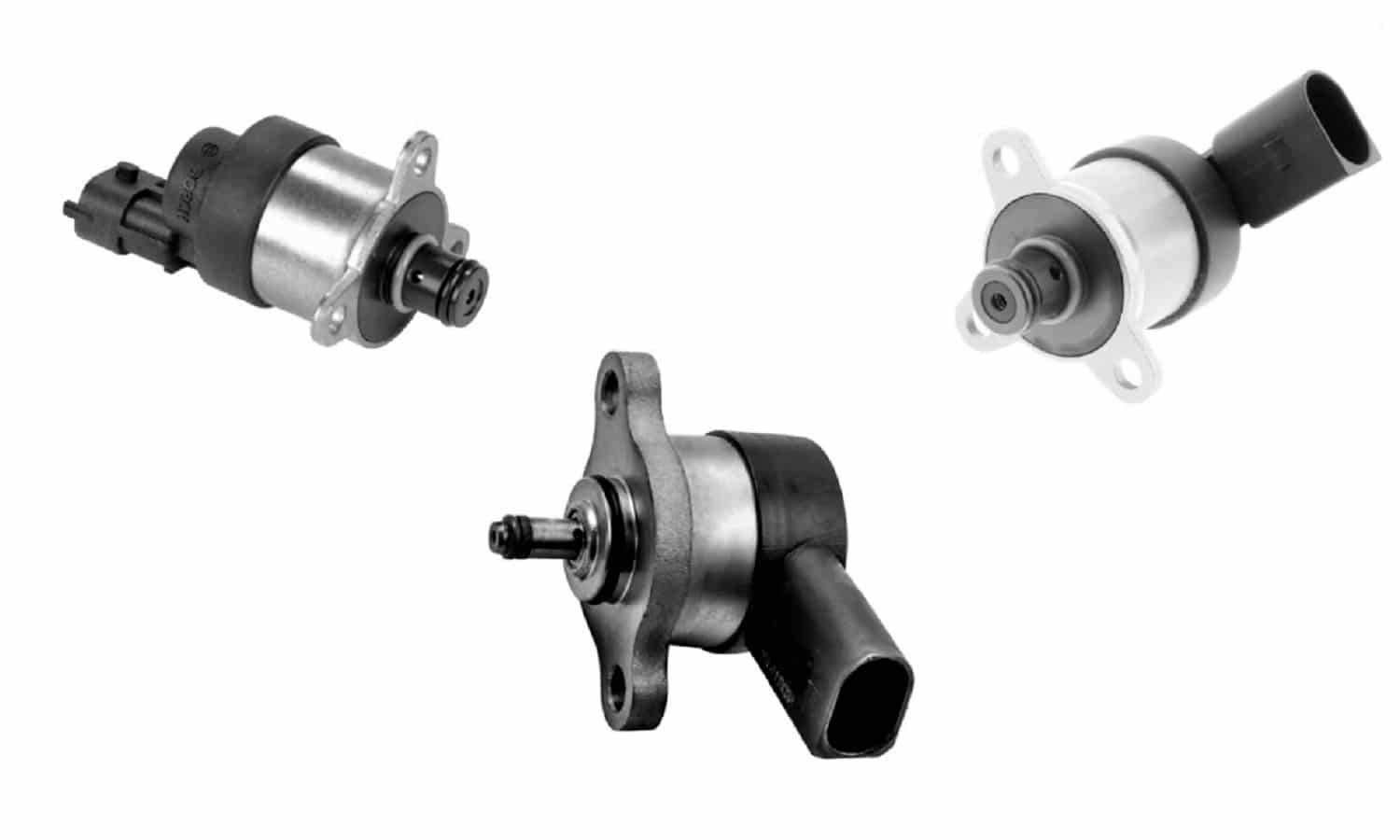
Depending on the manufacturer, we can find the pressure regulators in various locations. Although the most common is that it is installed in the distributor duct, or next to the fuel pump.
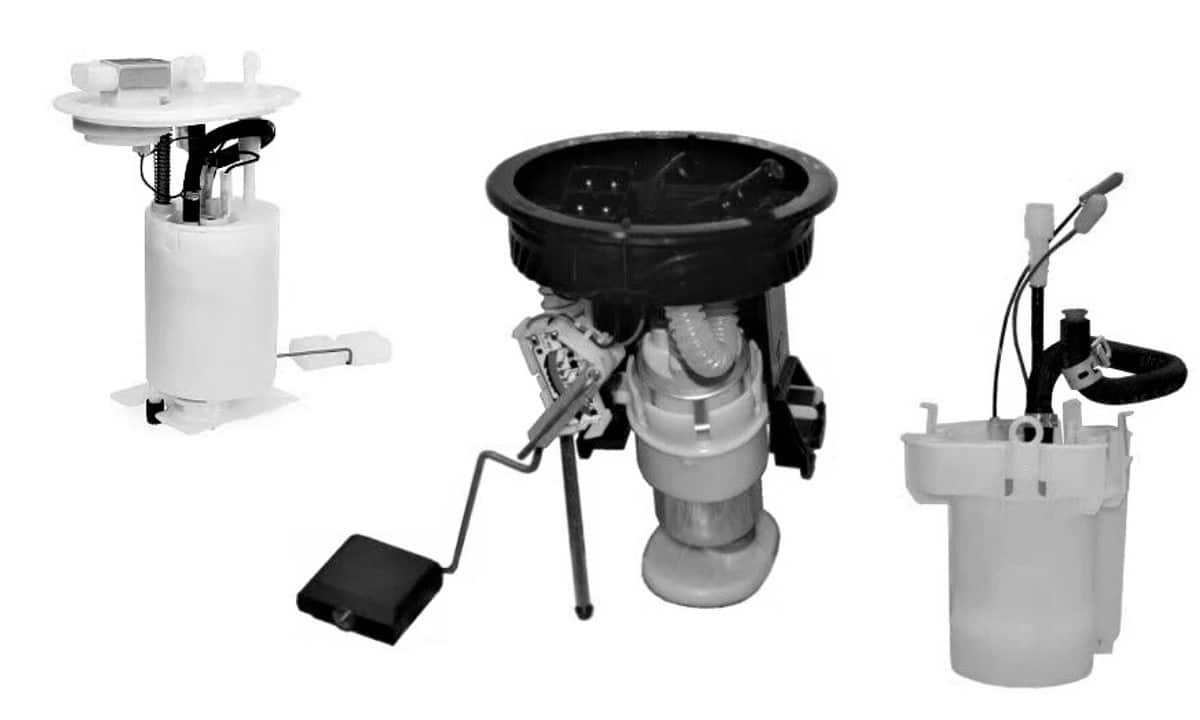
Why is a pressure regulator needed?
Pressure regulators were designed for electronic fuel injection systems. The engines that worked carburetorThey didn't have this kind of pressure control. It was in the nineties when they began to be incorporated into the engines.
Its need is due to the fact that most of the engine types do not work constantly. Both its speed and its load level vary constantly while we drive our vehicle. This affects the flow of fuel within the car's fuel system, so a system that maintains constant pressure is necessary to protect the injectors.

If this pressure were not at a suitable level, several problems would be caused. For example, if the pressure is very baja, injectors would not atomize the fuel correctly and the detonations would be worse in the combustion chambers. On the other hand, if the pressure were too high, there are many components that could deteriorate, because their tolerance levels would be exceeded.
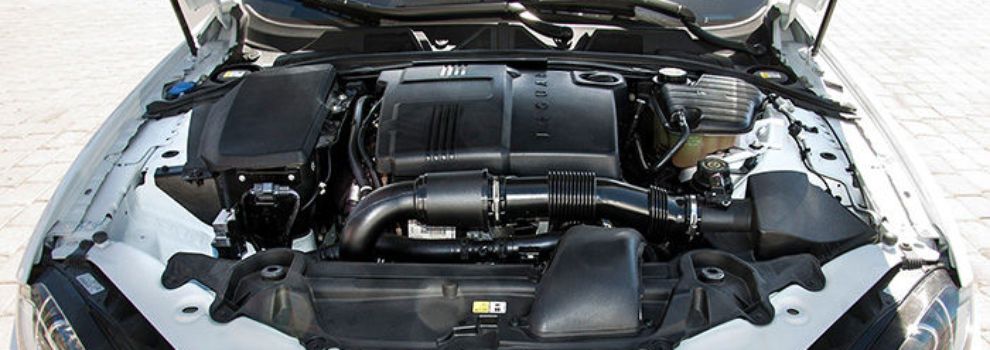
Regulator failure and prices
One of the most common problems with pressure regulators is that the fuel pressure valve stays open. The symptom that is noticed is the lack of fuel pressure with which the engine can be turned off. To diagnose this problem, the easiest thing to do is to block the return line that returns the fuel to the tank.
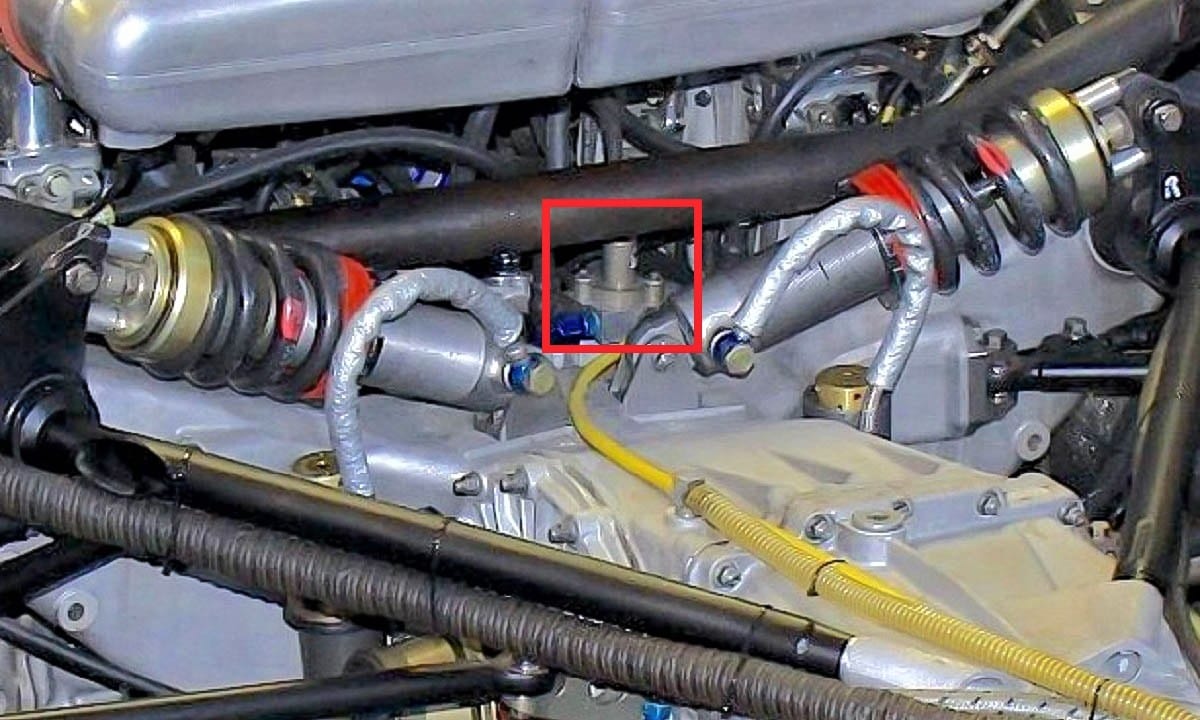
The best thing to do in these circumstances is change pressure regulatorBecause it is not an expensive element if it is mechanical. It usually costs between 20 and 40 euros in any online engine spare parts store. Unfortunately, the electronic pressure regulators can be more expensive. There are for just 30 euros, but there are also models that use regulators of up to 400 euros or more. You can see several examples on Amazon, where you can enter the model for which you are looking for the fuel pressure regulator.
The best thing you can do is buy an original, although there are prestigious brands that manufacture them for each model, as is the case with Bosch. Incidentally, it is one of the electronic component houses that manufacture regulators for car brands.
You must bear in mind that there are models in which fuel filter incorporates pressure regulator. In which case the price does not usually vary much, since the most normal thing is that it costs more or less the same as a separate regulator.
Picture 6 – Bill Abbott
good I have a 5.4 triton motor strength vehicle year 98, every time I have had to accelerate at low speeds the engine loses power as if it were drowning, so much so that it does not start if it has an obstacle, even when the vehicle is stopped I accelerate it to background and the same thing happens. scanner does not throw any fault. what could happen
have you cleaned the iac valve
pss this information does not have much value hahaha
aajhsaifnhsjkd htn
}
hello I have a peugeot 505 sr injection, and I have a loss of gasoline in the gasoline pressure regulator,, at the time of starting and for a few minutes after it cuts off,, if you know anything, to the mail thank you very much in advance!
I have a 3 Mazda 2004, how can I know what pressure the fuel pump should have?
I HAVE A 1989 VOLVO, IT WORKS PERFECT, BUT THE POWER CUT OFF AFTER IT REACHES 2.000
REVOLUTIONS PER MINUTE.
WHAT COULD IT BE?
Fuel or spark fuel, your question covers many results.
But if it is gasoline, the oxygen sensor produces that symptom now remember that the result can change since it is a carburetor, the nozzles could get stuck.
If it's ignition check the spark wires, coil, distributor.
And finally, if it is something electrical, look for a false in the terminals of the battery, the chassis, some ground terminal or the motor, agree to look for a short.
Hello, I have a daihatsu applause 91 and it is giving me 6 kilometers with a liter. Change belts, spark plug cables, change oil and all the filters. Could it be the regulating valve that is not connected? I suppose it has to give me 12 with a liter? Yes Can someone add something I appreciate. Greetings and thanks. Martin from Montevideo
it's carburetor
or bring a computer that would be a system (TBI) you tell me
I have a Fiat MultiJet year 2004 model 188, and a few days ago I noticed that it started to leak fuel (diesel) through the filter cover, this filter is of the type UFI 23.55.084.20, which has a plastic casing and inside it has the spare part or cartridge, since it has cables above and below this casing, I suppose that one will be for the water detector and another for the fuel pressure. Could the loss be because one of the detectors is dirty or broken? Thanks for your opinion.
Hello, I have a Mexican Golf 97 with an audi 1.8 engine and it suffocates a lot while walking, it loses power and does not regulate much, and it is difficult for it to start due to a lot of fuel, it could be the failure of the pressure regulator because it releases a lot of fuel through the injectors
Hello, I have a 4-cylinder isuzu rodeo, it starts but it does not start, I think it is the pressure valve, what do you think, thanks!
Hello, I can use this regulator in a carburetor to control the gasoline using the pump that comes with the vehicle that used injectors.
My vehicle is leaking fuel through the diaphragm hole in the high pressure pump: what happens if I plug the hole to eliminate the leak?
Is it a sustainable solution to eliminate the loss ?
I have a Nos 2000 thing which turns on easily in the morning, as they say, but after turning it off and letting a few minutes pass, it shows a delay in turning it on, I thank you for your collaboration
I have a corsa when I turn it on for the first time that day it turns on easily but when I do this function again after a few minutes it takes too long to turn it on, I thank you for your collaboration
Hi, I have a 2007 dodge charger and it kills detergent and jerks after driving it only when I stop at a stop and it kills
hello, question, if the relief valve of the ford ranger 2.3 2010, gets stuck, what happens? I have a problem with a truck that when I stop it doesn't start, then when it starts there are no problems, thanks. my email is: waltermorea@hotmail.com
I have an ISUZU Rodeo 2000 4×4 3.2 engine with an intermittent fault, code PO300 0 PO306 appears, injector coil was checked, CLEANING, change of spark plugs, vacuum system, what could it be?
hello, I have a kia sorento 2012 gdi gasoline when I drive long distance and I park and turn it off it doesn't turn on, when I wait 10 min more or less it comes back and turns on normally the strangest thing is that if after it turns on I turn it off it turns on normally, but at go again long distance like 30 kilometers more or less if I turn it off it doesn't want to turn on I have to wait a little while and then turn it on, but if I go the distance and don't turn it off it doesn't turn off or anything it only gives the fault if I turn off the vehicle, if I go short distance it turns on normally it is only in long distance I do not know if it would be something related to heating, the scanner does not show any code I do not know what to do, help please, la_belleza_29@hotmail.com
Hi, I need a pressure regulator for a high-end Suzuki, year 96, 1000 cc.
Hello, José, it seems to be a heating problem in the typical engine when an adequate oil is not used or coolant failure, efficiency of the cooling pump, etc. because the engine heats up a little more than normal and they also dilate a little more the pistons and rings as long as you don't turn it off nothing happens but if you turn it off the starting becomes harder due to greater friction of these elements with the cylinder walls and if you give them time they cool down and return to their natural dimensions and start again .
Hello good afternoon, I wanted to ask you a question to see if you can help me please. My vehicle has a fuel distribution system with return, the question is: if I put a fuel cell in it for a system without return, what problem would it cause me? Thank you